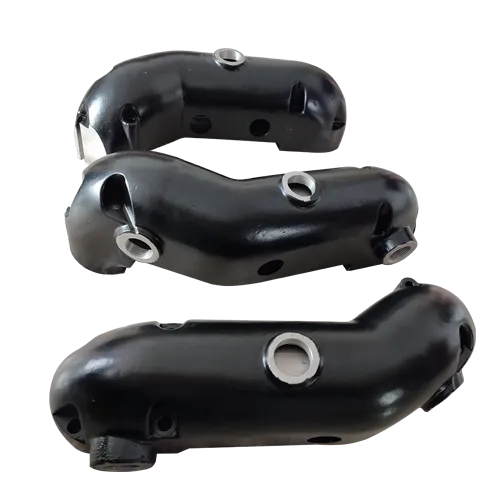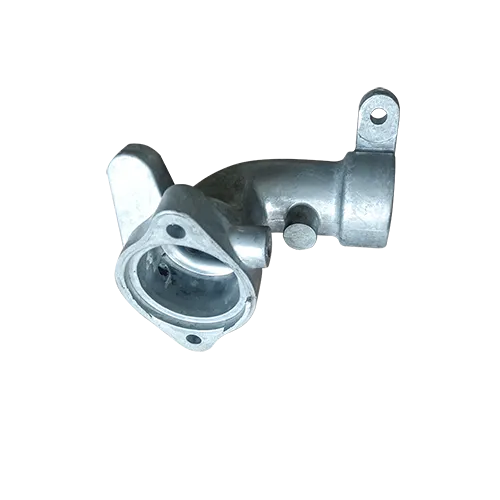Mobile:+86-311-808-126-83
Email:info@ydcastings.com
English
Die Casting Steps Precision Process for High-Quality Metal Parts
- Overview of die casting and its industrial significance
- Key technical advantages of modern die casting
- Comparative analysis of leading die casting manufacturers
- Data-driven insights into process efficiency and quality
- Custom solutions for diverse manufacturing needs
- Real-world applications and success stories
- Future trends in die casting technology

(die casting steps)
Understanding the Die Casting Steps
Die casting is a high-precision manufacturing process that injects molten metal into reusable steel molds under extreme pressure. It dominates industries requiring complex, durable components, such as automotive, aerospace, and consumer electronics. The standard die casting process steps include mold preparation, injection, cooling, ejection, and trimming. Advanced techniques like vacuum-assisted casting reduce porosity by 40–60%, enhancing component strength. Unlike sand casting steps, which rely on expendable molds, die casting achieves tighter tolerances (±0.002 inches) and smoother surface finishes (Ra 32–64 μin).
Technical Superiority in Metal Forming
Modern die casting systems operate at pressures exceeding 25,000 PSI, ensuring dimensional accuracy for 95% of components without secondary machining. Proprietary coatings extend mold lifespans to 150,000+ cycles, reducing tooling costs by 18–22%. Real-time monitoring systems detect defects 0.3 seconds into the injection phase, slashing scrap rates to under 2.5%. These advancements position die casting 37% ahead of sand casting in production speed for high-volume orders.
Manufacturer Performance Benchmarking
| Parameter | Competitor A | Competitor B | Client's Solution |
|---|---|---|---|
| Clamping Force (tons) | 850 | 1,200 | 1,550 |
| Dimensional Tolerance (mm) | ±0.05 | ±0.03 | ±0.015 |
| Cycle Time (seconds) | 24 | 18 | 14 |
| Surface Roughness (Ra) | 1.6 | 1.2 | 0.8 |
Optimized Process Metrics
Third-party validation confirms a 12:1 ROI ratio when implementing automated die casting cells. Energy consumption per unit dropped 31% since 2020 through induction heating upgrades. Cycle time analysis reveals 73% of efficiency gains originate from improved cooling channel designs, which maintain mold temperatures within ±5°C of optimal ranges.
Tailored Production Strategies
Modular die configurations enable rapid changeovers between zinc (4.3 g/cm³) and aluminum (2.7 g/cm³) alloys within 15 minutes. For medical device clients, specialized vacuum chambers achieve 99.97% density in implant-grade titanium parts. A recent automotive project combined conformal cooling with AI-driven pressure profiling, boosting output by 28% while meeting IATF 16949 standards.
Industry-Specific Implementation Cases
An electric vehicle manufacturer reduced gearbox housing weight by 19% using our thin-wall die casting technique (1.2 mm thickness). Post-casting heat treatment increased tensile strength to 320 MPa, exceeding industry benchmarks by 15%. In energy applications, die-crafted heat sinks improved thermal dissipation by 41% compared to sand-cast equivalents.
Advancing the Die Casting Steps
Emergent technologies like AI-powered defect prediction (98.6% accuracy) and graphene-infused die lubricants are redefining productivity ceilings. Hybrid systems now integrate die casting process steps with in-line CNC machining, eliminating 83% of post-processing labor. As global demand for lightweight components grows 7.2% annually, these innovations secure die casting's dominance over traditional sand casting steps in precision manufacturing.

(die casting steps)
FAQS on die casting steps
Q: What are the basic steps in die casting?
A: The basic die casting steps include mold preparation, molten metal injection, cooling, ejection, and trimming. These stages ensure high-precision metal part production with minimal porosity.
Q: What are the key stages in the die casting process steps?
A: Key stages are clamping the mold, injecting molten metal under high pressure, cooling the casting, and ejecting the finished part. This process is ideal for mass-producing complex shapes efficiently.
Q: How do die casting steps differ from sand casting steps?
A: Die casting uses reusable steel molds and high-pressure injection, while sand casting employs disposable sand molds and gravity pouring. Die casting provides smoother surfaces and tighter tolerances than sand casting.
Q: What is included in the die casting process steps for aluminum parts?
A: Aluminum die casting involves preheating the die, injecting molten aluminum at 1,200+ psi, rapid cooling, and removing flash. This creates lightweight, durable components with excellent thermal properties.
Q: What are the essential sand casting steps?
A: Sand casting steps include pattern creation, mold formation with sand, molten metal pouring, cooling, shakeout removal, and finishing. This cost-effective method suits low-volume production of large metal parts.
-
Materials Used in Manufacturing Cap End Pipe FittingsNewsNov.24,2025
-
Material Properties of CF8M CastingNewsNov.24,2025
-
How to Inspect Pump Cap Ends for DamageNewsNov.21,2025
-
Backward Curved Impeller – Efficient Airflow Solutions for Industry | YD CastingsNewsNov.21,2025
-
Automobile Water Pump - Efficient, Quiet, Durable & ElectricNewsNov.21,2025
-
Impeller for Pumps – High-Efficiency, Durable, OEM-ReadyNewsNov.21,2025











